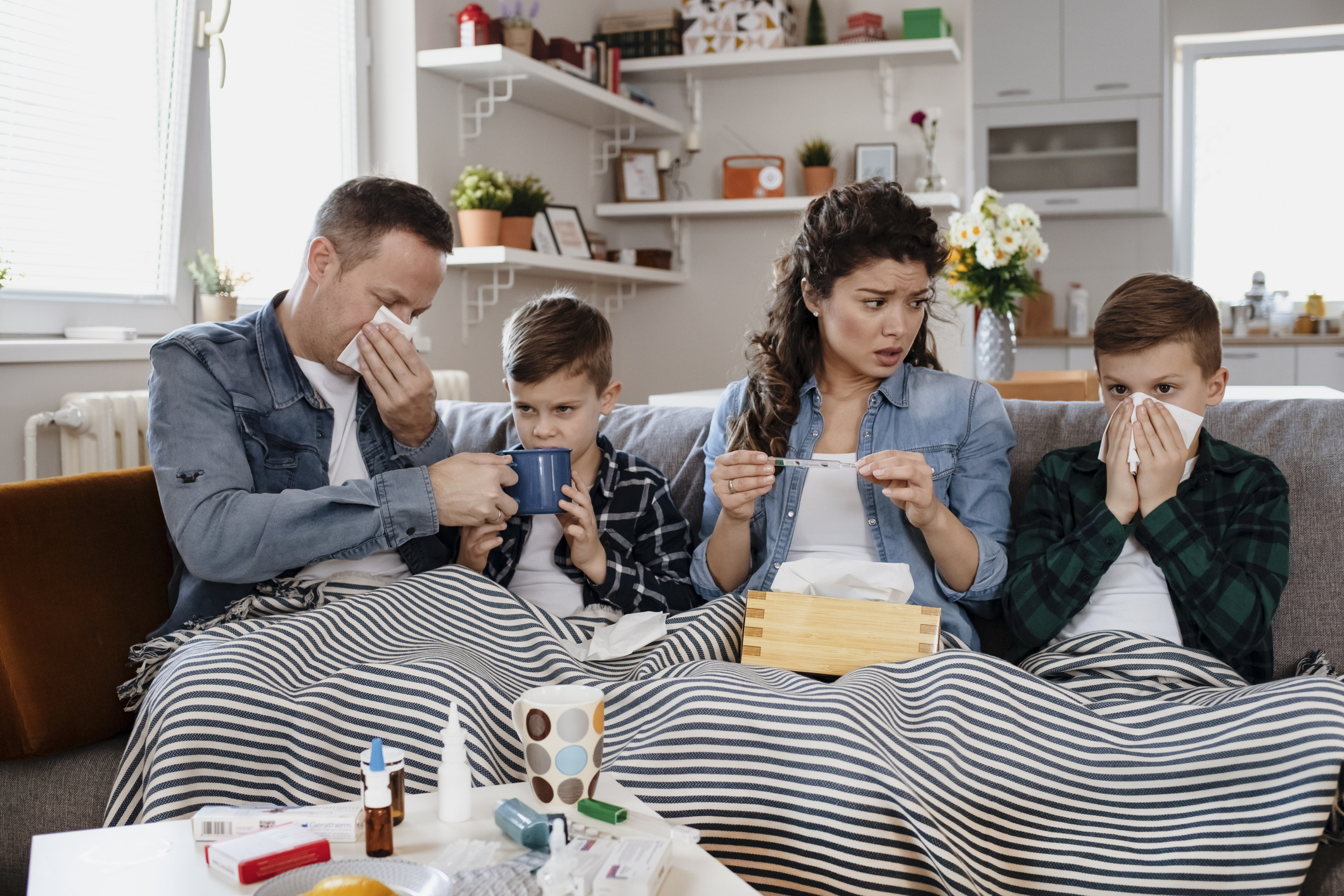
This fall, it seems like everyone has been laid up with something. Physicians at CityMD urgent care, like Pamela Arsove, MD, say cases of RSV, the flu, the common cold, and COVID-19 are all coinciding. And the number of children being hospitalized with RSV has been surging throughout the U.S. for several months now.
But why? Dr. Arsove explains what is causing the prevalence of multiple viruses, tells us how to manage our symptoms when we get sick, and offers tips that will keep us healthy throughout the holiday season and beyond.
“There is understandably a lot of concern about the surge in RSV and other viruses, but the important point to understand is that we are not seeing new viruses,” explains Dr. Arsove. “Instead, the usual viruses are appearing earlier than expected, and in greater numbers, which is leading to an increased percentage of hospitalizations.”
Types of viruses and symptoms
There are millions of viruses all around us — and they spread when someone coughs, sneezes, touches an infected surface, or drinks from a cup contaminated with germs. Some viruses are more common in the winter months such as influenza, RSV, parainfluenza virus, rhinovirus, norovirus, and coronavirus, including COVID-19.
Doctors can only test for, and identify, a small number of viruses. Most viruses remain nameless. So, you may never know what specific virus is causing those aches, pains, and sniffles.
If you experience any symptoms, your pediatrician or neighborhood CityMD can help. Walk right in and see one of our practitioners, obtain a diagnosis, and receive timely advice on treatment options. Evaluation is especially important to exclude COVID as many of its symptoms may mimic that of other viruses like the common cold.
Usual symptoms of viruses include:
- Sneezing and nasal congestion
- Sore throat
- Coughing
- Body aches and fatigue
- Fever
- Nausea and vomiting
- Diarrhea
Do antibiotics treat viruses?
It is important to receive an examination and diagnosis, so you know what treatment plan to follow. Antibiotics should not be used to treat viral illnesses. However, Dr. Arsove says that antibiotics are recommended to treat bacterial infections like strep throat or pneumonia.
Individuals who overuse antibiotics can develop antibiotic resistance. “This causes the drugs to be ineffective when you really need them,” explains Dr. Arsove. “Antibiotic resistance occurs when the bacteria mutate against the drugs designed to treat them. This happens when antibiotics are used inappropriately, especially in the management of viral illnesses.”
Supportive care is the best treatment
The best way to find relief for viral infections is with supportive care measures including rest, hydration, and over-the-counter pain relievers as needed. “There is no single medication that can cure a virus,” says Dr. Arsove. “Instead, the focus is on controlling symptoms and keeping patients comfortable.”
Viruses can take time to fully resolve. Dr. Arsove says a cold or RSV can last for one to two weeks, while the cough from bronchitis may linger for three weeks or more.
What is the immunity gap? How is it causing an increase in viruses?
Last summer, scientists warned about a phenomenon called the “immunity gap,” which would occur this winter. Normally, there is a predictable pattern to the outbreak of RSV and other seasonal respiratory viruses. They usually ramp up in late fall or early winter and decrease in the spring and summer.
“Because of the measures used to protect against COVID over the past several years — including wearing masks, social distancing, virtual learning, and handwashing — there was a notable decrease in non-COVID respiratory infections and flu cases in both children and adults,” explains Dr. Arsove. The decreased exposure has led to low, or no, levels of circulating natural immunity. This includes nursing mothers who usually give some passive immunity to their babies.”
Now, however, since widespread COVID protective measures are no longer in place, these viruses are circulating again and infecting a vulnerable and non-protected population. As a result, more infants, children, and adults are getting sick again in higher numbers and earlier than expected.
RSV is a good example of the immunity gap. Nearly all children are infected with RSV by the age of 2 years. They spread it to others, and the virus continually circulates and reinfects individuals throughout the viral season, explains Dr. Arsove. This keeps immunity active. Most children born during the pandemic, however, have not been exposed to RSV. This is a large population that is now becoming infected, and spreading it to others, and causing the large number of cases we are currently seeing.
Other reasons for decreased immunity
“There is also the possibility that part of the surge in viruses is due to what scientists call “the hygiene hypothesis.” This suggests that overly sterile environments created during COVID caused a lack of exposure to germs that are helpful to stimulate the immune system to defend against illness,” says Dr. Arsove.
It is unclear if people who get these viruses now will become sicker due to the immunity gap. Dr. Arsove says immunocompromised individuals and the elderly are most at-risk.
Health tips to avoid viruses
There is no way to completely avoid catching a virus, but you can lower your risk. Follow these tips to reduce your exposure to germs:
- Avoid social situations where someone is sick.
- Take a home COVID test if you have even mild upper respiratory symptoms.
- Practice good hand hygiene.
- Clean faucets, doorknobs, and other high-traffic areas to reduce germs.
If you are feeling under the weather, make an appointment with your pediatrician or visit your neighborhood CityMD to see one of our health care providers, get diagnosed, and receive appropriate treatment for your symptoms.
